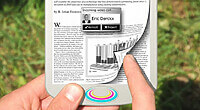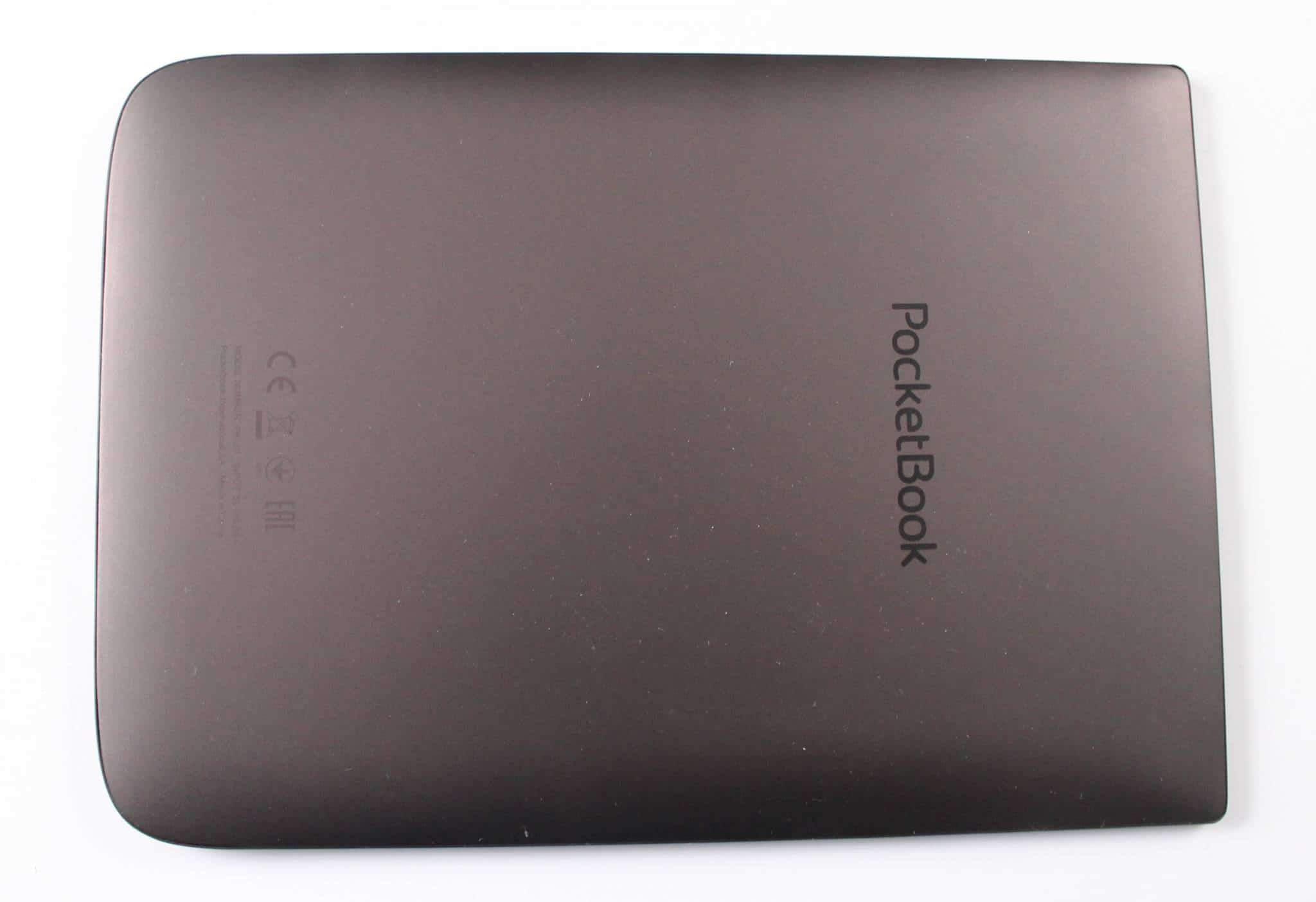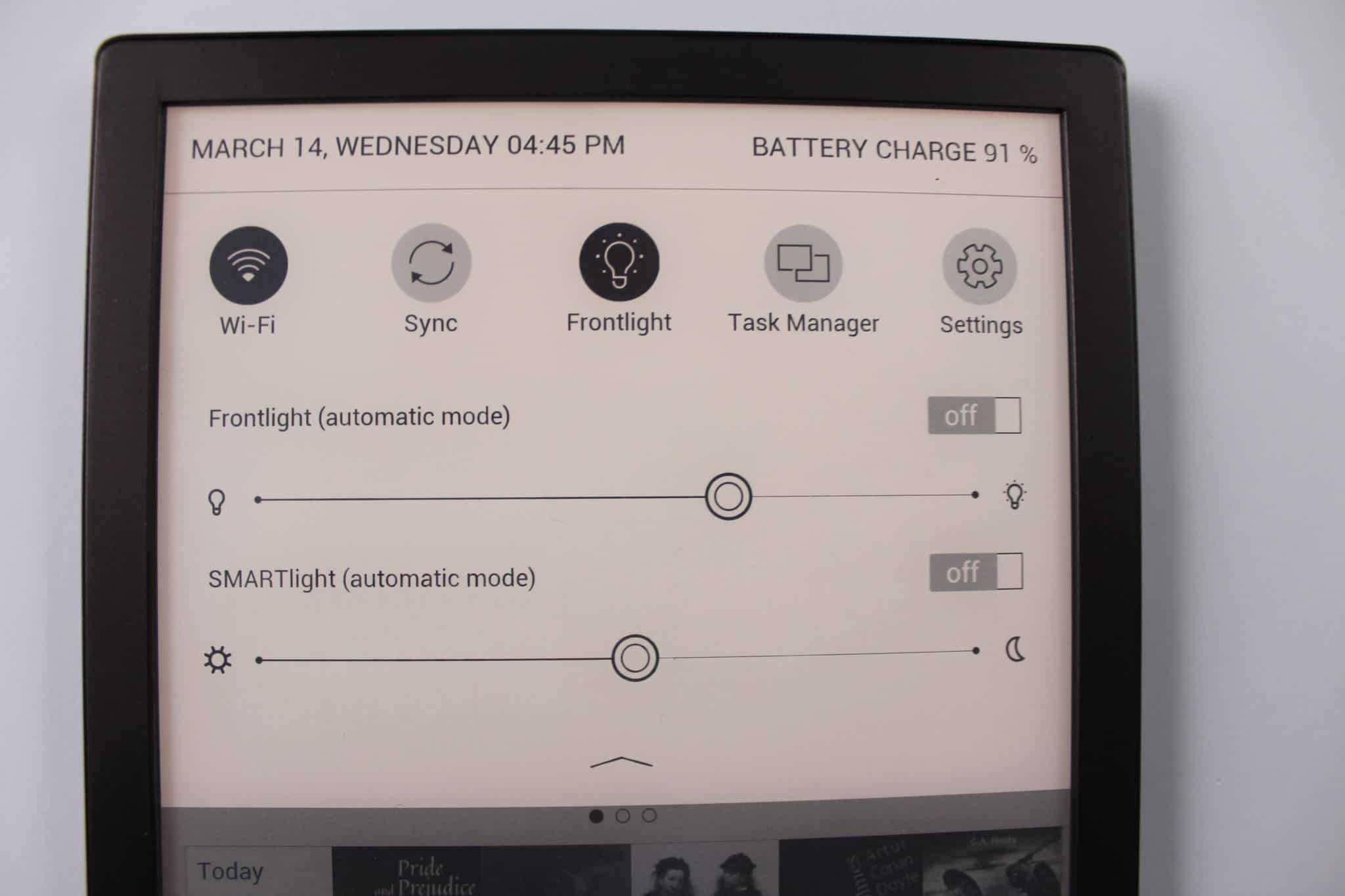The brand new InkPad 3 might just be the best e-reader that Pocketbook has ever produced. The extra large screen and new warm light illumination system really makes it a compelling value proposition. It looks like Pocketbook is trying to seriously compete against the Kobo Aura One and Tolino Epos, but how does this model fair on its own merits?
Hardware
This InkPad 3 features a 7.8 inch E Ink Carta display with a resolution of 1872×1404 and 300 PPI. It has a front-lit display with 10 white LED lights and 9 orange. I was surprised on how good this new Pocketbook ereader performs in low light conditions or complete darkness. I think this is primarily attributed to Pocketbook using new white LED’s than previous models, such as the Pocketbook Touch HD 2.
One of the big advantages of the smartlight/warm light display i s that you can mute the bright white screen into various degrees of orange. Pocketbook really hit a homerun with being able to really configure this experience, resulting in a ton of different options to warm up the screen. This is the first e-reader to really get this right.
Underneath the hood is a 1GHZ dual core processor, 1GB of RAM, 8GB of internal storage. There is a MicroSD port to enhance the storage up to 32 GB. This device does not have a 3.5mm headphone jack or a speaker, but Pocketbook has pioneered the concept of an audio dongle that plugs into the Micro USB port and has an audio output. This allows you to listen to audiobooks, music or podcasts. The InkPad 3 also has a text to speech engine, so you can initiate this function and have your books read aloud. The default is English, but there are 15 language packs to download from the main Pocketbook website.
The one thing Pocketbook has always done right is include manual page turn buttons on their ereaders and the InkPad 3 is no exception, you can easily hold it with one hand thanks to it only weighing 207 grams. It is made of plastic with not aluminium, so this cuts down on the overall weight.
Software
The main home screen comprises of a carousel that lists all of the books you have recently added or are in the process of reading. You can use the touchscreen to select a book or you can use the manual page turn keys to navigate around. The library menu is fairly basic, you can sort by authors, title or date added and all of the e-books show the cover art. The library menu has inertial scrolling, which means you can drag your finger down, let go and it will continue to scroll down a little bit. The app menu has a number of usable things, such as a few games (Chess and Sudoku) and some proprietary Pocketbook apps such as Send to Pocketbook, Dropbox for Pocketbook, The Pocketbook Bookstore, Pocketbook Cloud and a RSS Reader. What is most impressive is the stock note taking app they have. It is seriously robust as heck, and allows you to choose a bunch of different pen sizes to jot down notes, although it is not compatible with any stylus. There is also a new feature called ReadMore, which is similar to GoodReads, but seems to be only available in Russian.
You can browse the internet with the built in browser. You can use it to visit your favorite website or read your favorite blog. Google is strongly encouraging companies to employ mobile friendly websites and are allowing them to rank higher in the search engine. This is a boon for e-readers that struggled with big websites with lots of images in the past. You can also disable images or disable Javascript.
The settings menu has some default options, such as page refresh speed and firmware updates. If you want to borrow ebooks or audiobooks from the public library or purchase digital content from other booksellers, the InkPad 3 has Adobe DRM support. This will allow you to enter your Adobe login and password on the e-reader and then use Adobe Digital Editions to copy it to your device. Many e-readers do not have this kind of support, because Adobe license fees are really expensive.
E-Reading Experience
The Pocketbook InkPad 3 primarily supports EPUB and PDF files. It does not have a dedicated digital bookstore, so you will have to sideload in your own content or borrow them from the public library. Luckily this device supports a wide array of ebook formats; PDF, PDF(DRM), EPUB, EPUB(DRM), DJVU, FB2, FB2.ZIP, DOC, DOCX, RTF, PRC, TXT, CHM, HTM, HTML, MOBI, ACSM.
You can change the line spacing, margins and a bunch of fonts. You can increase the size of the text and it even has a hyphenation option, which emulates Amazon Bookerly, which truncates spaces between words. In most e-books there are formatting problems when a book is not optimized for a particular device. Some words have a normal space, but others (appear like this, and are hard to read). The hyphenation option solves most of these spacing errors, but not all of them.
There are a ton of pre installed dictionaries and translations available. This is due to Pocketbook being based in Europe, so they support all of the major countries and markets there.
Page turn speed is really quick, this is due to the E-ink Carta screen and the dual core processor. There are advanced settings to limit the page refresh rate from 1-10 pages or completely shut it off. If you are just reading EPUB books, you won’t be let down.
Wrap Up
I think this is the best Pocketbook ereader currently available, and it is also the most expensive. It costs €199, which is about the same price as you would pay for the Kindle Oasis 2, Kobo Aura One and Tolino EPOS. Unlike the competition, Pocketbook is not a walled garden that locks you into a specific ecosystem, it is wide open.
I would recommend the InkPad 3 to people who have a few devices in the past and are used to sideloading content. New users might struggle with the concept of sideloading in their own books or even knowing on where to download them from the internet. Casual users just want a device where they can buy books right on it and start reading. The InkPad 3 has lots of cool features, but there is a bit of a barrier.
PROS
7.8 inch CARTA screen with 300 PPI
Audio funtionality
Lightweight
Front-lite screen is really solid
Supports a wide array of ebook formats
SD Card
Dropbox support
CONS
Web browsing experience is hampered with slow loading times
Cannot purchase ebooks right on the device
Not very accessible to new users
Rating: 8/10
Michael Kozlowski is the editor-in-chief at Good e-Reader and has written about audiobooks and e-readers for the past fifteen years. Newspapers and websites such as the CBC, CNET, Engadget, Huffington Post and the New York Times have picked up his articles. He Lives in Vancouver, British Columbia, Canada.





